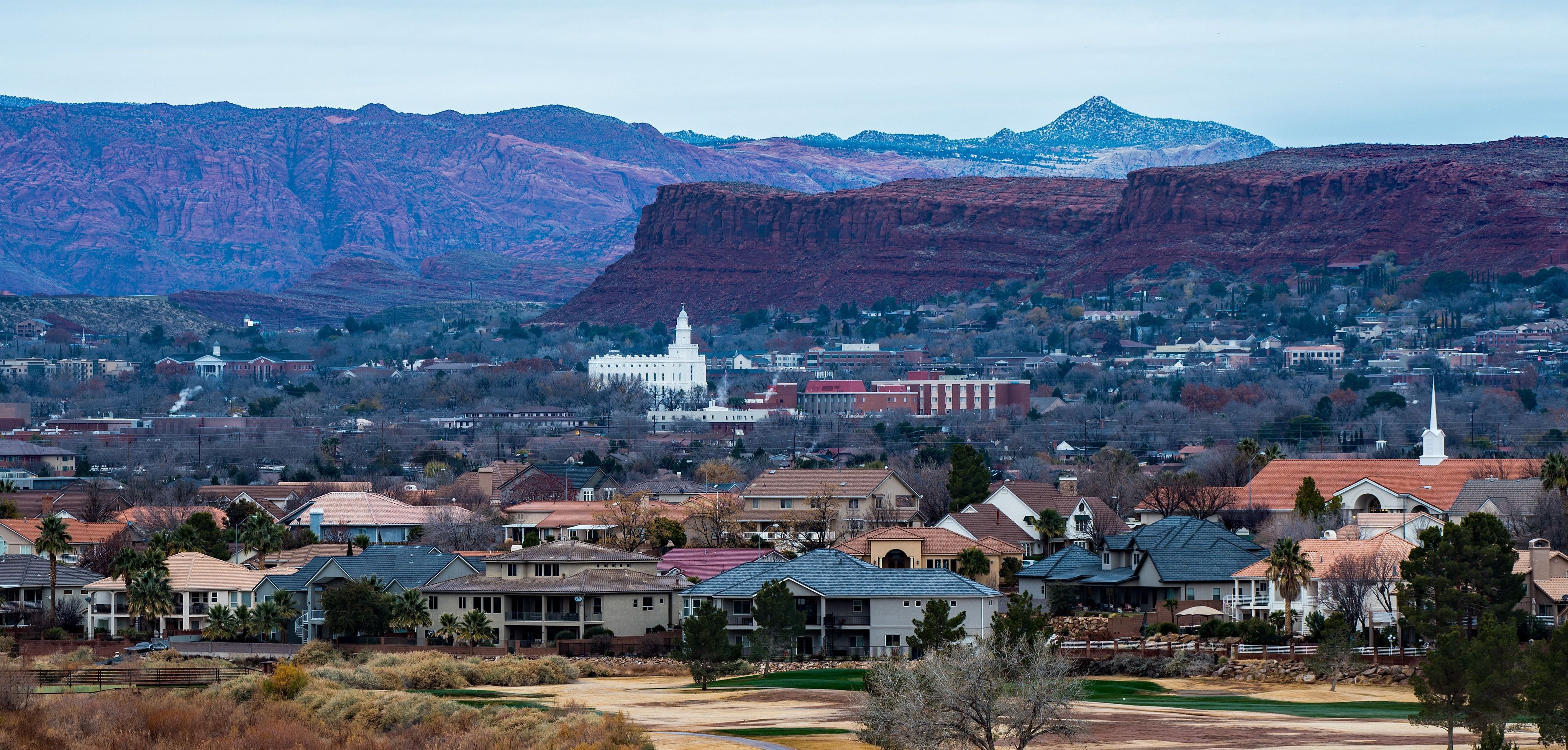
As we all know, the last 2.5 years have been full of change for many cities across the United States. The population studies we do every six months are our most-read blogs for a reason. Everyone wants to know these days where people are moving and why.
The “why” is hard to answer, but we can definitely tell you the “where.” First, in case you’re interested in checking out the last several population studies, here’s a recap:
The 15 Fastest-Growing Metropolitan and Micropolitan Areas (10/2020 to 10/2021)
The 15 Fastest-Growing Metropolitan and Micropolitan Areas (4/2020 to 4/2021)
The 15 Fastest-Growing Metropolitan and Micropolitan Areas (10/2019 to 10/2020)
The 15 Fastest-Growing Metropolitan and Micropolitan Areas (6/2018 to 6/2020)
What is a Metropolitan vs. a Micropolitan Area?
First, two quick definitions from the United States Office of Management and Budget (OMB):
- Micropolitan areas are those with a core urban area of at least 10,000 but fewer than 50,000 people.
- Metropolitan areas have at least one city with a population of 50,000 or higher.
As of March 2020, there are 384 metropolitan statistical areas and 543 micropolitan statistical areas in the United States.
With that out of the way, let’s get into it!
Top 15 Fast-growing Metropolitan Areas
Here’s a look at the 15 fastest-growing metropolitan areas in the U.S. between April 2021 and April 2022 (and if you’ve been following along, here’s our blog on growth between October 2020 and October 2021, published January 2022).
#15: Cape Coral-Fort Myers, Florida | 2.80% (new to the top 15 since the Oct. 2020-Oct. 2021 list)
#14: Raleigh-Cary, North Carolina | 2.81% (#14 on the Oct. 2020-Oct. 2021 list)
#13: Bend, Oregon | 2.85% (new to the top 15 since the Oct. 2020-Oct. 2021 list)
#12: Idaho Falls, Idaho | 2.96% (#15 on the Oct. 2020-Oct. 2021 list)
#11: Boise, Idaho | 3.04% (#4 on the Oct. 2020-Oct. 2021 list)
#10: Killeen-Temple, Texas | 3.06% (new to the top 15 since the Oct. 2020-Oct. 2021 list)
#9 (tied): North Post-Sarasota-Bradenton, Florida, and Punta Gorda, Florida | 3.07% (North Post-Sarasota-Bradenton new; Punta Gorda #6 on the Oct. 2020-Oct. 2021 list)
#8: Provo-Orem, Utah | 3.09% (#7 on the Oct. 2020-Oct. 2021 list)
#7 (tied): Hilton Head Island-Bluffton, South Carolina, and Sherman-Denison, Texas | 3.14% (both new to the top 15 since the Oct. 2020-Oct. 2021 list)
#6: Logan, Utah/Idaho | 3.29% (#10 on the Oct. 2020-Oct. 2021 list)
#5: Hinesville, Georgia | 3.30% (#9 on the Oct. 2020-Oct. 2021 list)
#4: Lakeland-Winter Haven, Florida | 3.51% (new to the top 15 since the Oct. 2020-Oct. 2021 list)
#3: Coeur d'Alene, Idaho | 3.62% (#3 on the Oct. 2020-Oct. 2021 list)
#2: Myrtle Beach-Conway-North Myrtle Beach, South Carolina/North Carolina | 4.64% (#1 on the Oct. 2020-Oct. 2021 list)
#1: St. George, Utah | 4.95% (#2 on the Oct. 2020-Oct. 2021 list)
A few observations about metropolitan area growth (and loss):
- 14 of the 20 fastest growing metros are in the Sun Belt region (i.e., warmer, southern states) of the U.S. The other six metropolitan areas are in Idaho, Utah and Oregon.
- Cities over one million people with the greatest growth rate are all in the south: Raleigh, Austin, Houston, Charlotte, and Phoenix.
- People continue to flee the largest metros (New York, Los Angeles and Chicago lost a combined 437,000 people).
- The San Francisco + San Jose region is the biggest loser amongst large cities - down 2.1% (losing almost 125,000 people).
Top 15 Fast-growing Micropolitan Areas
Now for the 15 fastest-growing micropolitan areas in the U.S. between April 2021 and April 2022:
#15: Cedartown, Georgia | 2.53% (new to the top 15 since the Oct. 2020-Oct. 2021 list)
#14: Shelton, Washington | 2.54% (new to the top 15 since the Oct. 2020-Oct. 2021 list)
#13: Kalispell, Montana | 2.68% (new to the top 15 since the Oct. 2020-Oct. 2021 list)
#12: Bozeman, Montana | 2.70% (new to the top 15 since the Oct. 2020-Oct. 2021 list)
#11: Rexburg, Idaho | 2.74% (#9 on the Oct. 2020-Oct. 2021 list)
#10: Bonham, Texas | 2.77% (new to the top 15 since the Oct. 2020-Oct. 2021 list)
#9: Cullowhee, North Carolina | 2.78% (#3 on the Oct. 2020-Oct. 2021 list)
#8: Prineville, Oregon | 3.08% (#14 on the Oct. 2020-Oct. 2021 list)
#7: Pinehurst-Southern Pines, North Carolina | 3.53% (new to the top 15 since the Oct. 2020-Oct. 2021 list)
#6: Granbury, Texas | 3.61% (new to the top 15 since the Oct. 2020-Oct. 2021 list)
#5: Clewiston, Florida | 3.73% (new to the top 15 since the Oct. 2020-Oct. 2021 list)
#4: Sandpoint, Idaho | 4.09% (#7 on the Oct. 2020-Oct. 2021 list)
#3: Cedar City, Utah | 4.52% (#10 on the Oct. 2020-Oct. 2021 list)
#2: Jefferson, Georgia | 4.99% (#1 on the Oct. 2020-Oct. 2021 list)
#1: Mountain Home, Idaho | 5.44% (new to the top 15 since the Oct. 2020-Oct. 2021 list)
A few observations about micropolitan area growth (and loss):
- About half of the top 15 is new to the list since the last list (10/2020 to 10/2021), including the micro area with the biggest % increase, Mountain Home, Idaho. As more and more people have been priced out of increasingly expensive areas like Boise and Atlanta, growth has extended to two nearby markets, Mountain Home, ID, and Jefferson, GA, and others like them.
- Oil metros and micro areas are down heavily in the past year (Williston, ND -6.53%, Odessa, TX -2.75%, Dickinson, ND -2.07%, Midland, TX -1.24%)
- Top growing micropolitan areas continue to be found in a few select states: Idaho, Utah, Montana, Texas, Georgia, and North Carolina.
Winding Down 2022
There are many new names on the top 15 list since our last iteration of this population study and a few recurring themes (e.g., the Sun Belt is hot, no pun intended). It will be a while before we know for certain whether these population changes are permanent. The pandemic changed many people, with remote work becoming more of a norm and many people seeking a calmer lifestyle than the bigger U.S. cities offer.
This has been a sneak peek at the new population data from STI: PopStats. For SiteSeer users that subscribe to PopStats, this data is now available in the platform. If you’re not a SiteSeer subscriber but want to learn more about how the platform can help you make critical decisions about markets, site selection and more, contact us or take a demo!


